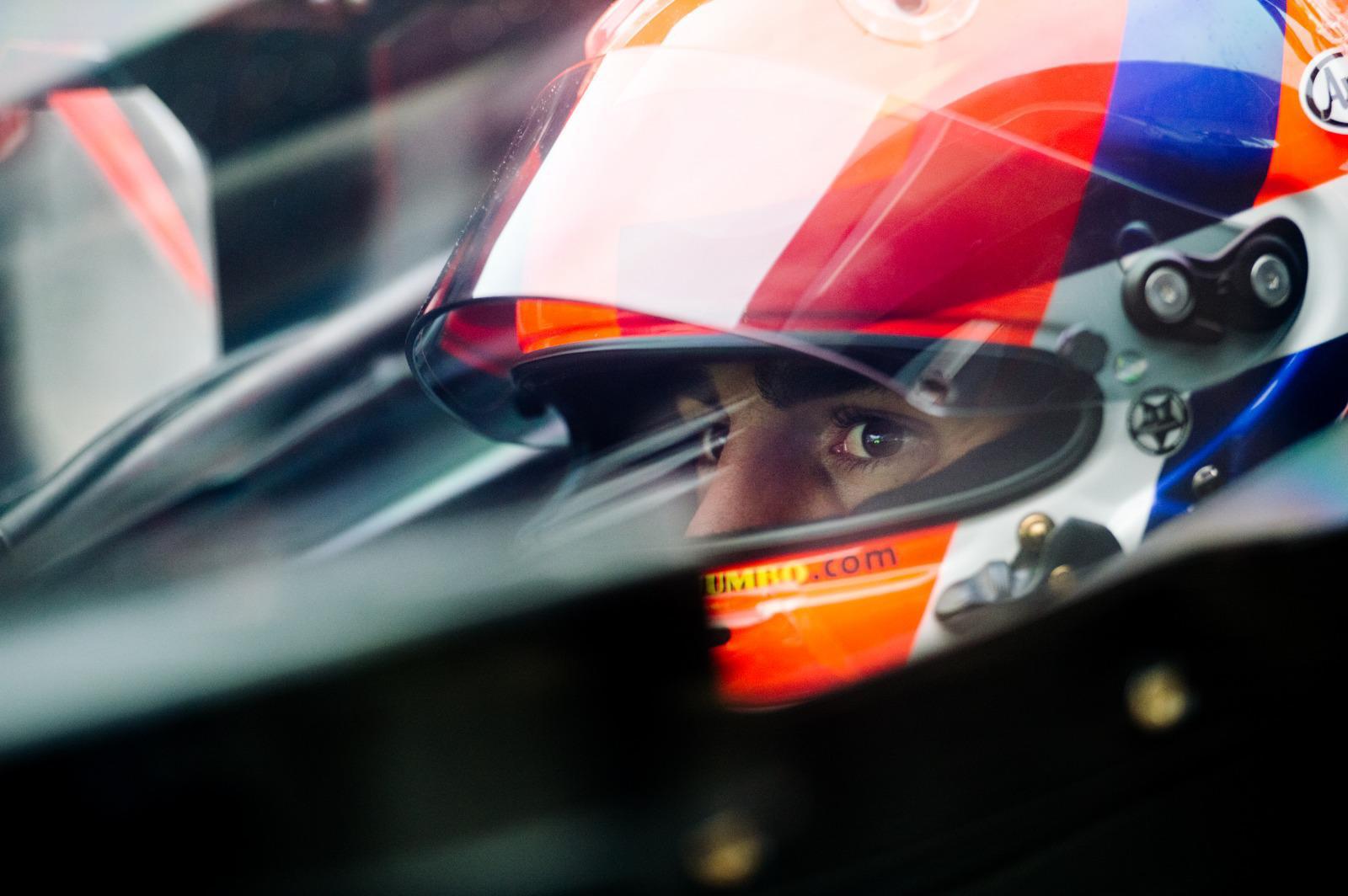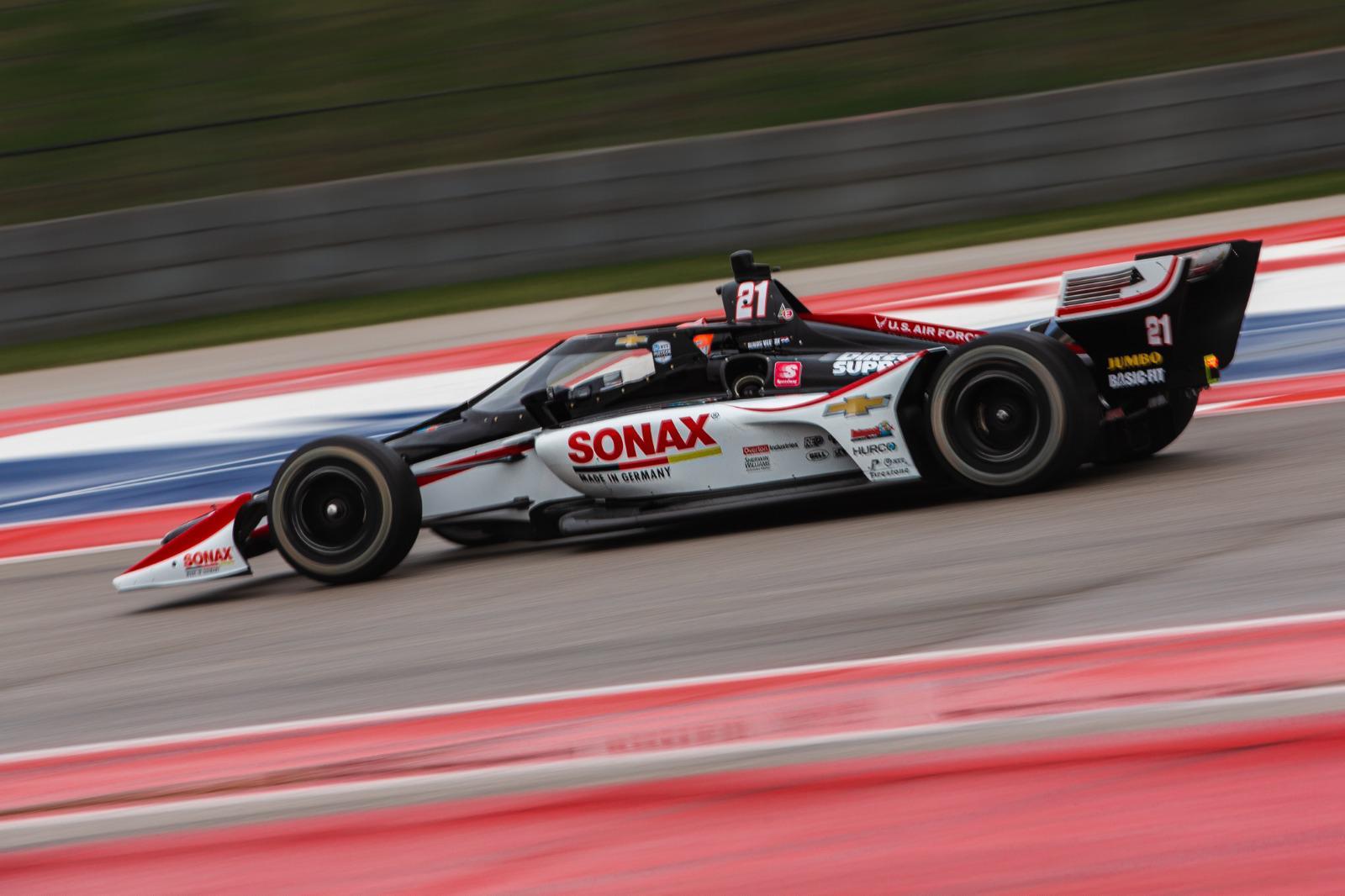“When I am really in a flow, I often sing to myself inside my helmet!”
Photo Credit: Ed Carpenter Racing
The Gist
Dutch teenager Rinus VeeKay, the new lead driver for Ed Carpenter Racing, has impressed many seasoned observers with his speed and maturity. In an exclusive for Champweb, editor-at-large Jeroen Demmendaal spoke to the Rookie of the Year contender on the eve of the 2020 NTT IndyCar Series season opener.
“When I am really in a flow, I often sing to myself inside my helmet!”
His new team owner Ed Carpenter thinks VeeKay is “the strongest driver to come out of Indy Lights” last year. Veteran reporter Marshall Pruett has been telling his podcast listeners for months now that VeeKay is going to surprise a lot of people in 2020. And then there is the anticipation in our shared home country. Every week, more Dutch race fans discover that this year they have a countryman in America’s premier open-wheel series.
The arrival of ‘RocketRinus’ in the NTT IndyCar Series this year should result in a significant boost in Dutch interest in IndyCar racing. For many years, IndyCar racing has been a VERY acquired taste in the Netherlands. But as VeeKay started climbing the Road to Indy ladder, I began to hope that he was the force of nature needed to boost the popularity of IndyCar racing here. Already back in 2017, I penned a piece arguing why VeeKay could be Holland’s next Indy 500 winner – maybe a slightly premature prediction in those USF 2000 days, but he has done nothing to dispel that notion since.
In other words, plenty of expectation and pressure rests on the 19-year old shoulders of Rinus “VeeKay” Van Kalmthout. Too much pressure? He doesn’t think so. “I think it is great,” he says when asked about the growing interest. “People are very interested in what I do, even though it is not easy to follow IndyCar in Holland – almost everything focuses around Formula 1. But especially after my first race, I think people will really start to get it.” For a series that wants to grow beyond the North American continent, VeeKay is an important contribution to that ambition.

ECR Rookie Rinus Veekay
Photo Credit: Ed Carpenter Racing
The 2020 IndyCar Series is full of good stories, but the Rookie of the Year (ROTY) battle is arguably one of the best. Coming at a time when the series is on the verge of a generational shift, the trio of Rinus VeeKay, Oliver Askew and Alex Palou present a tantalizing view at the future of the sport. Together with other notable recent arrivals such as Colton Herta, Pato O’Ward and Felix Rosenqvist, a new group of young hotshots is shaping up to take the championship fight to Josef Newgarden and Alexander Rossi once veterans like Scott Dixon and Will Power retire.
While it would be obvious for headline writers to focus on another VeeKay-Askew battle following their Road to Indy rivalry, VeeKay himself actually sees Dale Coyne’s Spanish ace Palou as his main competitor for ROTY. “I think he will be the man to beat, to be honest. It’s a bit difficult to say, but he has been very strong in Europe and Japan. I do think Askew and Arrow McLaren SP will be fast as well, but Palou is going to be a very tough competitor,” says VeeKay.
Asked about that rivalry with Askew, he admits there is one but that it is also easily exaggerated. “In the end you do wish for the best for each other, as long as he is behind you, haha!” Then, more seriously: “I think his main strength is in running up front. When he can focus on his own race, he is incredibly strong. I think my strength over him lies in pure racing, passing other drivers. I am a bit more aggressive, and probably a better racer than a qualifier. That is one area I need to improve on, those quick one laps.”
While the ROTY battle is an interesting one, VeeKay himself is already looking beyond that. When presented with the choice between winning the ROTY title without race wins and winning races but not the rookie title, he doesn’t miss a beat: “Definitely winning races in my first year, as a teenager. I mean, eventually no one remembers that Rookie of the Year title.”
It is testament to his ambition. Late last year he said a number of times that he aims to drive for Penske within three years. Ask him about that now, and he steers clear of repeating it, instead issuing a vote of confidence in his new employer. “Of course, in recent years ECR did not always seem competitive enough. But I can tell there is so much potential here. Sure, Penske is the team to beat, but I really think we can make a big jump forward with the team.”
For 2020 he signed a one-year contract at ECR, and confirms there is an option for extension if both parties agree. “But it’s the results that count. We need to look at the results,” he says. Who holds which option remains unclear and VeeKay remains tight-lipped about other details, but you’d be forgiven for thinking that he is the one who holds all the cards. You get the feeling that in his mind, it is the team that has to deliver to him, rather than the other way around. Because there is not a doubt in his mind that he will bring the goods.
This is also a good moment to take away a misconception about how he got his contract. At the time of his announcement, back in mid-November, ECR had announced just a few days earlier it was parting ways with Spencer Pigot. To many it seemed like the affable young American, known for his speed as well as his lack of personal funding, was exchanged for a Dutch hotshot walking into the ECR shop with a few million euros in his back pocket. Comments about VeeKay being a “ride buyer” popped up on social media, putting him on par with some of IndyCar’s lesser gods of the past.
Yet nothing could be further from the truth. Motor racing requires funding and drivers securing a seat without any money are the exception to the rule, Pigot being one of them. While it is true that VeeKay receives some support from Dutch firms such as food conglomerate Jumbo and fitness group Basic Fit, the #21 entry is largely funded by ECR’s existing sponsors Sonax USA and Autogeek.com – the same sponsors that allowed for Pigot to spend two years as the team’s lead driver.
So why do Big Ed and his backers put their lead driver eggs in the basket of a 19-year old Dutchman? Because he is bloody fast, that’s why.
Rinus Veekay
“Definitely winning races in my first year, as a teenager. I mean, eventually no one remembers that Rookie of the Year title.”
VeeKay says it almost matter-of-factly. “I am someone who gets up to speed pretty quickly, quicker than most other drivers.” Indeed he is. He needed only one year on each rung of the Road to Indy ladder to learn what needed to be learned, racking up victories, pole positions and an Indy Pro 2000 (formerly Pro Mazda) title along the way. Sixteen wins and thirty-six podiums in less than fifty races underline the fact that Rinus VeeKay is not your average rookie.
He seems somewhat bemused when I ask him how he does it. Struggles to answer at first. “Pooh, that’s a tough question. I guess you either have it or not, haha.” And yet, there must be some method to it. Some general approach he follows when first getting into a new car?
“I usually drive in a way that I think approaches the limits of the car, without going over it,” he says, trying to explain his MO. “I often miss my braking points pretty much everywhere in the first few laps, but after that I know where the limit is. You know where you can brake a bit less, hit the gas a bit earlier, enter the turn a bit faster.” Above all, he is not much of a thinker behind the wheel, preferring to feel his way around in an intuitive way. “The less I think, the better I drive.” And then he reveals: “When I am really in a flow, I often sing to myself inside my helmet!”
It is that natural ability that endeared him to team owner Ed Carpenter during his first IndyCar test in Portland, and then in a follow-up test in Mid-Ohio. It also ensured, as Carpenter told Racer.com following the Portland test, that VeeKay was comfortable in the car almost straightaway and able to give good feedback to the engineers. That in turn allowed the team to gather a lot of valuable data, rather than spending lots of time getting the driver comfortable. For a small team like ECR, which has a lot less data to work with than larger outfits like Penske and Andretti, that is a good thing.
VeeKay confirms that narrative. “I remember getting into the tub for the seat fitting, and even though I hadn’t driven a lap yet, I immediately felt at home. More than in any other car before,” he recalls. “And already in my first or second run at Portland, I was really pushing the car and getting on the limit.” During the Portland test he managed to give Rossi and Hunter-Reay a run for their money on new tires, while his fastest time at Mid-Ohio would have landed him a front row start at that year’s Honda 200.

Speak with other observers and the same theme of raw talent surfaces. One man who knows a thing or two about how to rate talent from the Road to Indy is Rob Howden. The Canadian, the official announcer of the Road to Indy for the past decade and a veteran observer of the American open-wheel ladder and karting scene, has seen his fair share of youngsters coming up through the ranks. He has no doubt in his mind about whether VeeKay is the real deal.
“The funny thing about Rinus is, his development has been almost linear with the cars themselves as he progressed,” says Howden. “There is his blinding speed, but he pairs that with consistency. He doesn’t really make a mistake.” Howden was also impressed with VeeKay’s fighting spirit in 2019, as it became clear that he would lose the title to Askew. “I liked that he made a statement at the end, pretty much sweeping the last two weekends. That really secured his name in the IndyCar paddock.”
A challenge for VeeKay this season will be to deal with adversity, says Howden, as it will no doubt surface at some point. “Everything has gone so well for Rinus and he is used to running up front, so he has not really been challenged yet. I want him to be able to show the focus and maturity needed to deal with adversity, and for that he will need a good relationship with the team and with his engineer.” After all, Howden points out, this is IndyCar. “If you are off by 0.2 seconds, you’re in 19th.”
VeeKay himself is aware of this as well. “It won’t be like in Lights, where I was on the podium every weekend,” says the Dutch youngster. “But I actually spoke about that with Spencer Pigot a few times last season. He said: at times it will be tough, certain weekends will be difficult. But at those moments you just have to keep working and make the best of the situation, and not lose faith.”
As for VeeKay’s ambitions to become a Penske driver, Howden believes that is a realistic aim. “Most definitely. I mean, how many more years do Power and Pagenaud have left at Penske? Roger will be looking even more at the other drivers this season and ask himself: who are going to be my next guys?” He argues Josef Newgarden is a template for the Penske way of selecting drivers: “That is how Roger works. You need to prove yourself and then after a few years you come on his radar. Plus: guys like Askew and Veekay, they are typical Penske types. Really polite, well spoken.”

While becoming a full-time IndyCar driver is a massive change in itself for VeeKay, he has made a few other fundamental changes in recent months. Obviously he has adjusted his training regime together with his trusted personal trainer Raun Grobben, focusing more on strength and stamina. But he has also adjusted his diet, going all vegan over the winter. “I feel so much stronger. But it is not as established everywhere in the US yet, I have noticed. I ordered a portion of vegan tacos the other day, and when they delivered my tacos, they were all covered in cream and cheese!”
Another big change is that VeeKay is following the example of many of his colleagues by moving into a new apartment in Indianapolis. His plan is to stay in the United States throughout the season, without flying back to his home country in between races. “My approach this winter has been to let go of some things so I can focus on racing 100 per cent. Staying in Indy between the races just makes sense, and it’s also close to the ECR shop,” he explains.
One thing that will help him feel at home is North American racing culture. VeeKay is something of a racing romantic and doesn’t feel a lot of love for modern-era tracks that are covered in AstroTurf and large slabs of asphalt in the run-off areas. His favourite track is Road America, where drivers can smell the barbeques of the race fans as they circle the Wisconsin countryside. “That’s also why I don’t like COTA that much, because of all those run-off areas. Old-school tracks like Road America, with their grass, gravel and walls, force you to adjust your driving as you look for the limit.”
Another staple of North American racing are street courses such as St Petersburg and Toronto, both tracks on which he excelled on the Road to Indy. “Yeah, those are awesome. I really like those 90 degree turns. And you are so close to the wall all the time, everything seems to go three times as fast,” he says with clear enthusiasm in his voice. His ability to find the limit quickly also helps him there, he believes. “You often get red flags on those tracks and limited track time, so if you can get up to speed quickly and don’t fear the wall, that can give you a lot of benefits.”
His enthusiasm extends to the cars, comparing IndyCar to Formula 1 of twenty years ago. “Modern Formula 1 cars are so extremely good and perfect. IndyCar is different that way, you still see drivers working hard and fighting the car. I think it’s awesome, that’s what racing is to me.” The same goes for the engine noise in IndyCar: “I love it still has that brutal sound. It’s what I grew up with, those old V12 and V10 sounds: my dad used to have an old Benetton.”
As for the season ahead, he is hoping for “a Colton Herta-like” season. Get onto the podium, maybe even win a race and build on that. “I know he was younger than me at his debut and I can’t become the youngest winner in history anymore,” Veekay says. “But I can still become the youngest champion, and the youngest Indy 500 winner!” No lack of confidence then. Chances are we are going to hear quite a bit of singing over the ECR radio this season…
-JD

How will Charlie Kimball fair back as a full time driver with AJ Foyt?
Like this type of content? Want more?
Submit your email address below so we can email it to you.
